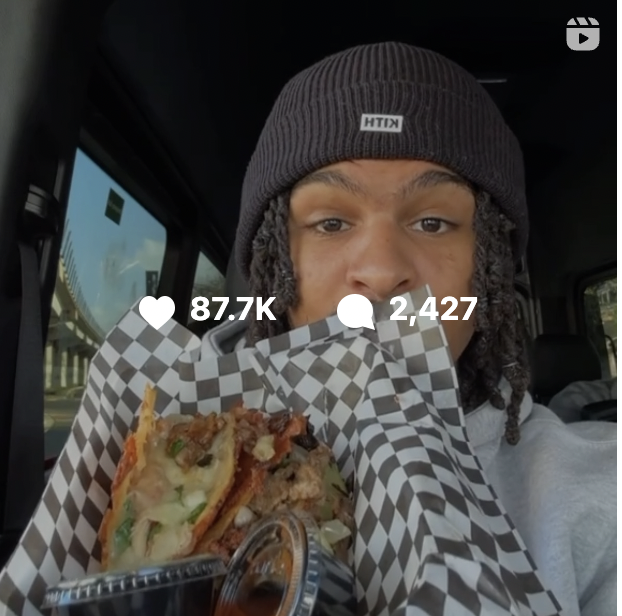6 Types of Influencers for Your Budget
5 MIN READ
The world of influencer marketing and content creation is a complex beast. While consumers eagerly look to influencers for guidance on the latest trends and must-have products, the once unshakable trust in these tastemakers appears to be declining. Brands are left navigating these shifts, investing more time in tailoring their influencer partnerships to fit their budgets and strategic objectives.
In today’s landscape, the idea of a one-size-fits-all influencer solution is an impossibility. Simply choosing the influencer with the largest following doesn't guarantee significant, positive results for your brand. Instead, it's crucial to figure which influencers lead to brand awareness and which ones excel at driving actual conversions. Of course, there are always exceptions to the rule–we’ve seen macro influencers with incredible conversion rates and abysmal ones—but the more you know, the better able you’ll be to build an effective program.
Luckily, we're here to equip you with the tools to craft the best influencer program for your brand. You’ll get to know the differences between influencer types and how they align with your budget. From there, we’ve got the tips you need to cultivate relationships with influencers that will lead to a successful partnership for everyone, leading to long-term partnerships and increased overall brand trust.
6 Types of Influencers
There is a caveat. While there are five tried-and-true types of influencers, a sixth exists. It’s the cream-of-the-crop influencer that any lifestyle brand would bend over backwards to have on board: the celebrity influencer. But don’t hold your breath—instead focus on the attainable ambassadors.
CELEBRITIES
Followers: 10M+
Budget: $$$$$
Who:
Athletes, actors, larger-than-life personalities. Celebrity influencers have an explosive reach and tend to be the A-listers on social and in real life. However, their enormous audiences do not always equate to high engagement.
When:
The best time to call in a celebrity influencer is somewhere between your private jet landing on your remote tropical island, but before you actually arrive at your waterside villa courtesy of your mega-yacht. Getting the picture? Probably best to keep scrolling.
MEGA INFLUENCERS
Followers: 1M-10M
Budget: $$$$
Who:
These heavy hitters did just that: hit it big on social media. They are mega influencers and not celebrity influencers because they’ve built their audiences primarily through the content they’ve posted. Similar to celebrities though, they are notoriously known for having large but passive audiences.
When:
Bring in a mega influencer when your brand awareness needs a triple shot of espresso in short order. In this case, it’s all about the top of the funnel. Even short campaigns with these individuals will increase awareness and up the coolness factor of your program. These trendsetters often create movements. They are one of the hardest to access of all influencer types.
MACRO INFLUENCERS
Followers: 250K – 1M
Budget: $$-$$$
Who:
Professional social media personalities with a niche focus. They do not have the same celebrity vibe of mega influencers. Since they’re adept at brand partnerships, their sponsored content tends to come across as organic and conversational.
When:
Large, specific audiences are the bread and butter of macro influencers. When you need high reach in your target market or want to target broad demographics (ie: females), these individuals can help. They are also pros at creating high-quality, strategic content. They know what resonates with their followers. Partnering with macro influencers should be less about brand awareness and more about clicks and conversions.
MID-TIER INFLUENCERS
Followers: 50K – 250K
Budget: $$
Who:
Mid-tier influencers are the most “common” social media influencers and the ones you’re likely the most familiar with. Both professional and semi-professional influencers, these individuals can be the most effective for your program because they take the good qualities from both the micro and macro influencers. They are big enough to be considered influential but small enough to still engage with their audience.
When:
Partner with mid-tier influencers when you’re looking for an affordable way to drive results with highly targeted engagement. These individuals are great at driving word-of-mouth since, oftentimes, their followers don’t realize they’re following an “influencer”. They’re friends of the medium campaign budget.
MICRO INFLUENCERS
Followers: 10K – 50K
Budget: $
Who:
Micro influencers are often times more relatable individuals that can garner higher engagement than larger tiers of influencers. By nature, their smaller size garners increased trust from their followers and they vet sponsors very carefully.
When:
A smaller following means a smaller price tag. Although you may need to partner with more micro-influencers to reach the same audience size as one mid-tier influencer, the increased engagement rate per influencer may make it worth it. Additionally, when you have small resources with a program that has multiple target markets, you make want to consider micro influencers.
NANO INFLUENCERS
Followers: 1K – 10K
Budget: <$
Who:
The smallest of the bunch. But still powerful when used correctly. Nano influencers are often locally oriented or play in extremely niche spaces. Think B2B tech silos (subsets of AI for example) or a local organization. Seen as regular, everyday people they often have the highest rate of engagement of all influencer tiers.
When:
Nano influencers give their sponsor brands an air of authenticity. Use these individuals when your program needs extremely specific audiences and you have little to no budget. We’ve come across large enterprises who are playing in extremely niche spaces where only nano influencers were available to really drive conversation. Nano influencers are the most open to in-kind partnerships – content swaps, schwag, etc.
How to Build an Influencer Mix
As much as you’re able, you want to hit all the possibilities. As we mentioned previously, we’ve worked with clients where only one type of influencer makes sense for a campaign. But this tends to be the exception rather than the rule.
When you’re building your mix of influencers, keep in mind each of your program goals and how each goal relates to your customer funnel. Take in to account your customer’s journey and the various stages of your campaign. Perhaps you want to launch your campaign with a mega influencer for a brief stint and then promote across macro and mid-tier influencers for several weeks with deeper content types. Bring the campaign home using conversion-oriented content with micro and nano influencers.
If you have an influencer budget of $350,000 or more, you can begin to entertain mega influencers. Otherwise, your program will see more benefit from working with a larger variety of influencer types.
We’ve put together several influencer mix examples based on a variety of budget and goals to help jumpstart the brainstorming process.
Budget: $300,000
Program Goals:
Brand awareness
Email signups
Budget: $50,000
Program Goals:
Engagements
Brand followers
Budget: $15,000
Program Goals:
Website traffic
Engagements
Once you determine your mix, keep a few things in mind when collaborating on content with your influencers.
Manage expectations
Yours and your influencer’s. Chances are, there will be a few kinks that will need to be worked out after the first collaboration. It helps to be very clear about what you expect from the partnership and what the influencer is willing to do and share.
Don’t be afraid to negotiate
You might not be able to meet an influencer’s asking rate at first glance. Hop on the phone and have a transparent discussion to feel out how much the influencer wants to work with your brand and how flexible they are. You might be able to negotiate a partnership that consists of both paid and in-kind compensation.
Be consistent and continuous
With the exception of the mega influencers, a one-time sponsorship with an influencer is not the most effective way to spend budget. Plan to partner with an influencer multiple times during the course of your campaign. These types of sponsorships are less likely to be ignored by followers as they have repeated exposure. It also allows you to progress the audience through the various stages of the customer funnel.
Get creative
There are very few hard and fast rules to working with influencers. Part of building the relationship with each individual is finding a way to collaborate that works for both of you. Perhaps it’s a retainer model where you engage the influencer in a set amount of content per month. Or you agree to a content swap. Or the influencer agrees to promote several key moments during the campaign. Options are limited only by your creativity.
The flexibility and effectiveness of influencer marketing makes it a valuable addition to the majority of brand campaigns. Taking the time to build those relationships can help expand your program as whole, allowing you to tap in to influencers time and again.
If you have questions about how to build your influencer mix, send us a note or connect with us over on LinkedIn.
Originally posted October 27, 2022. Updated March 27, 2024.














